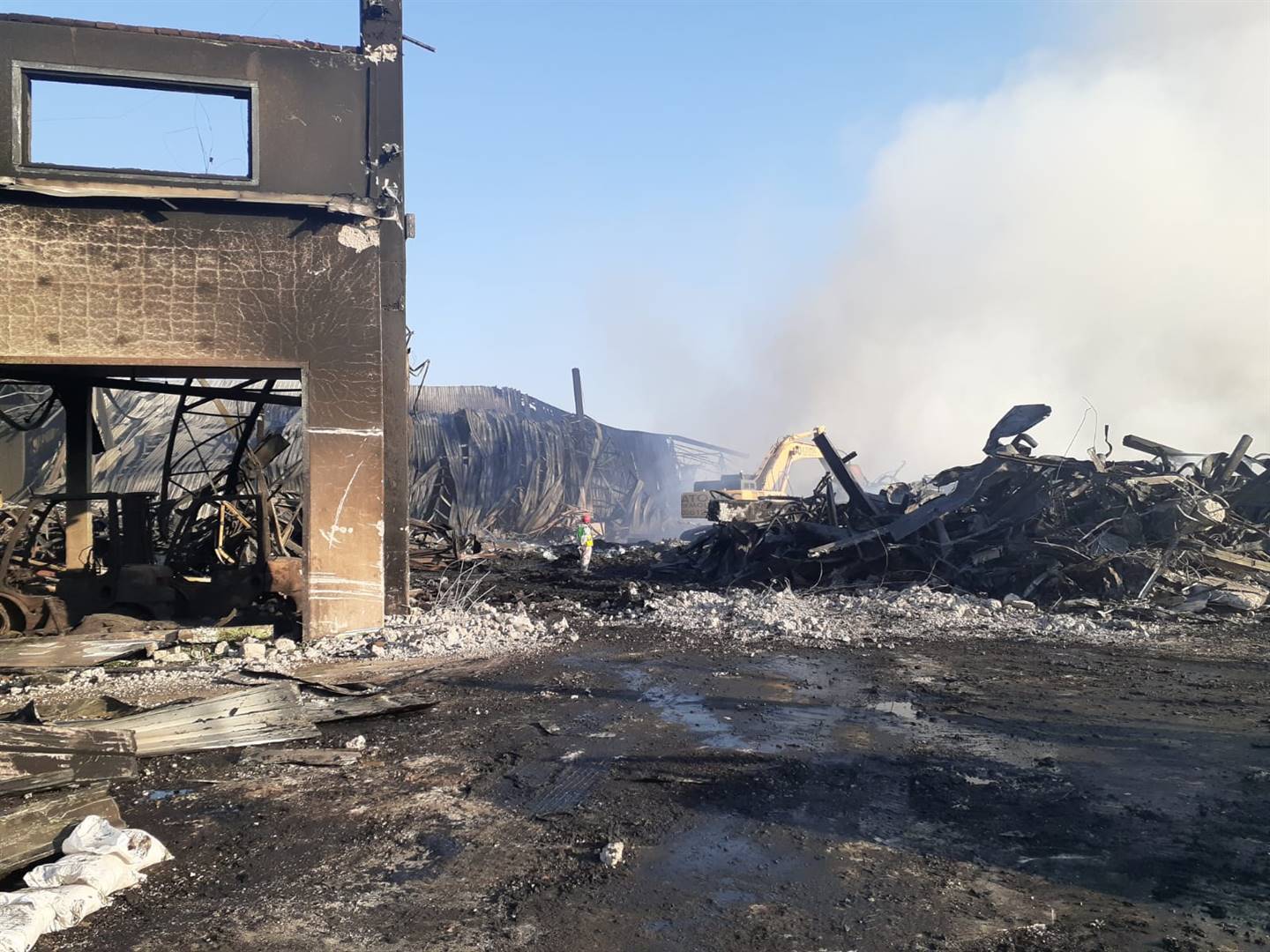
Chemical giant UPL says a year after the torching of its Cornubia warehouse during the July unrest led to a toxic chemical spill, water quality surveys in the area have shown that levels of some metals including arsenic, manganese, copper and zinc have been reduced to below SA coastal guideline levels.
Airborne dust samples no longer contain arsenic, the company added.
"Continuous monitoring and testing for pollutants during and after the fire revealed that, once the fire was extinguished, harmful pollutants were substantially lower while air borne dust samples no longer contained arsenic," it said.
Company spokesperson Thabi Ndhlovu said on Sunday that UPL had hosted members of the interim Multi-Stakeholder forum (MSF) to present work that had been conducted by a team of specialists over the past year since the arson attack on the warehouse on 12 July 2021, with officials from eThekwini municipality also present.
Presentations were delivered on air quality, human health, freshwater environment, wetlands, geology, groundwater, coastal and marine environments, including sampling, clean up, remediation and rehabilitation work undertaken over the past year.
"Their work has included ongoing water, sediment and air testing as well as assessing certain parts of the food chain’s (trophic levels) health in the ecosystem and conducting and supervising, amongst other things, toxicity, herpetological (snakes/frogs), vegetation and entomological (insect) surveys of the site," Ndhlovu said.
According to Ndhlovu, soil and sediment samples in the tributary and estuary showed residual organic and inorganic impacts, but levels had decreased "significantly". Surface water samples were now within guidelines for water used for recreational purposes.
But work is ongoing to decontaminate the warehouse site and nearby wetland and tributary environment. The nearby pollution control dam – which flooded and spilled during heavy rains in April – still contains "low levels of residual pesticides" and "low overall toxicity", UPL said.
According to UPL, the water in the pollution control dam does, however, reach "such significant dilution levels" that it no longer poses environmental harm.
But while UPL says it is proud of the progress made, it is not out of the woods.
Over 60 chemicals were found present in the air after looters started the fire at Cornubia warehouse. The devastating results of the disaster were only confirmed in February this year, when the atmospheric impact report, commissioned by UPL and provincial government, was released.
While firefighters tried to control the flames, toxic smoke was released into the air for several days and chemicals were washed into the uMhlanga estuary as well as the oHlanga tributary. Nearby beaches remained closed, as a precaution, for months.
Rehabilitation is ongoing and the company expects future engagements on the matter.
At the time of the blaze, amaBhungane reported that UPL was storing large quantities of chemicals that were banned abroad, but not in South Africa.
Public health risk assessment is still ongoing in the surrounding area as well as on first responders and site personnel – with a clinic set up in the nearby Blackburn community – in order to finalise report on risks to human health.
The remediation action plan must still be finalised, Ndhlovu said.

